South American Food – How to Feast Your Way Through the Continent
South America Latin America Things To Do Travel Tips Wine and Dine
We’ve got the top 14 specialties of South American food that you won’t want to miss – and one sensational tip to help make the most of your culinary journey.
Traditional food is a huge deal in South America and, by consequence, in all our tours, no matter where in the continent we guide our guests. Thanks to the international fame many Latin dishes have garnered (specialties like ceviche, empanada and asado are household names, nowadays) we’re finding more and more travellers are stepping foot in the continent fully-informed and with list in hand, ready to devour South America, one appetising bite at a time.
So far, so yum!
Yet in case you’ve yet to catch up with the news (ie. that food in South America is bloody amazing) we thought we’d introduce you to 14 of the best and most iconic foods to try in South America – and where best to try them.
You’re welcome!
1. Ceviche (Peru)
Like many of the foods on this list, ceviche is claimed to have been ‘invented’ in several South American countries and, nowadays, is a recognised staple in Peru, Ecuador and Mexico. Although all three certainly serve up delicious versions, there’s no doubt that Peru is the one nation that’s most linked to the dish. What is ceviche, you ask? That’ll be raw fish marinated in lime juice and spices, mixed in with an abundance of coriander and chilli and usually served with steamed sweet potato or corn, which dulls the sharpness of the chilli and rounds off the taste impeccably well.
Ceviche may well be the cornerstone of Peruvian cuisine but is only one of many exceptional dishes you can try here. Discover more about the Cuisine of Peru and get ready to have your taste buds blown away. This is arguably the most culinary-enriched country in the whole continent.

2. Empanada (Argentina and Chile)
Here’s another South America food that’s incredibly famous and that can vary dramatically depending on where you try it. The empanada, which literally translates to ‘wrapped in bread’, is the most popular street-food and snack in the entire continent and can be filled with either savoury or sweet ingredients and then is either fried or baked. Everything about the empanada varies from country to country: not only the filling but also the size, the cooking method and even the name. Unlike ceviche, which is basically the same meal whether you have it in Peru or Ecuador, empanadas in South America can vary wildly so comparing them is nearly impossible.
The most ‘classic’ version is probably the baked Argentinian empanada, which places the emphasis on prime-cut beef, sprinkled with some cumin and stuffed with a slice of boiled egg and caramelised onions. In Chile, they add black olives and raisins, that leave a mouth-watering sweet & savoury aftertaste.
The classic empanada is the best lunch-on-the-go when travelling in South America!
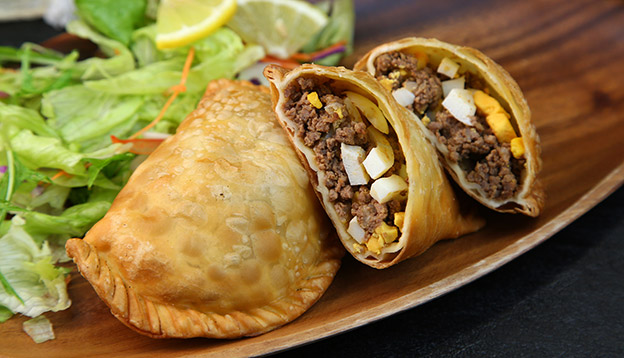
3. Salteña (Bolivia)
Salteña is Bolivia’s answer to the empanada although it is different in so many ways that it deserves its own entry on this list. Salteñas are our go-to dinner when we’re in La Paz, especially after a full day of explorations. A Bolivian salteña, filled to the brim with meat and vegetables like peas and carrots, all cooked in a delicious sauce, is a bonafide meal-in-one – especially at high altitude where big meals are overwhelming to digestion.
That’s inarguably why Bolivians love to start their day with salteñas; they can fuel your energy for the entire day, so you’ll see street-carts being set up at first light – grab one to have for lunch later and you’ll be set.
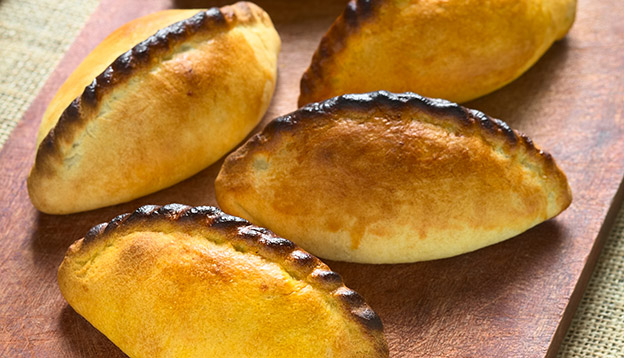
4.Pastel de choclo (Chile)
The Chilean version of the shepherd’s pie is insanely delicious and particularly heartwarming when you’ve just spent a whole day hiking in Patagonia. Much like the country’s empanada, the ‘corn pie’ can come with different meat fillings (beef, chicken or both) and is usually layered with braised onions, black olives and raisins, topped with a mash made of corn, milk, butter and herbs and then baked to golden perfection. This is not a ‘light’ dish by any means and, ironically enough, it is mostly cooked in summer in Chile but really makes the best cold-day treat when you’re in the mountains.
Check out some more delicious food to try in Chile
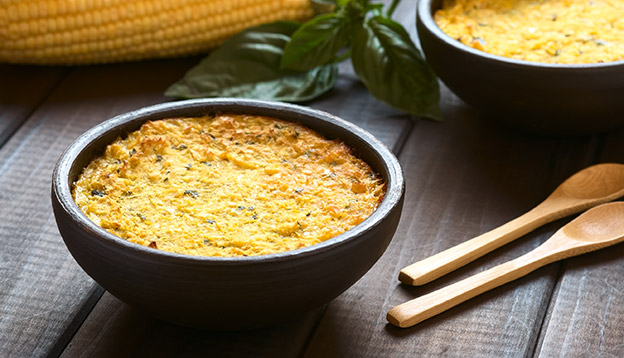
5. Asado (Argentina)
Meat is just about synonymous with Argentina, the country renowned for growing the best beef cattle in the world. It’s no surprise, then, that the best thing to eat in the country is not just a meal but a whole cultural experience. Asado is the Argentinian BBQ and it is an inherent part of the local culture, comparable with the BBQ love-affair we have, here in Australia, except perhaps ten times stronger.
Holding an asado is a social event of its own accord, with a designated chef (the asador) overseeing the cooking and a selection of meats (usually beef, chicken, pork, chorizo sausages) cooked over an open fire. Keeping life simple, Argentinians usually serve only salads and red wine with their BBQ meat (because what else could anyone desire?) and make an entire day out of the feasting. Visiting a traditional estancia for a day of horseback riding with gauchos, and partaking in an asado, is one of the most enjoyable ways to soak up this incredible cultural experience.
Discover more mouth-watering food you should try in Argentina get acquainted with Mendoza: the best wine-producing region in Argentina
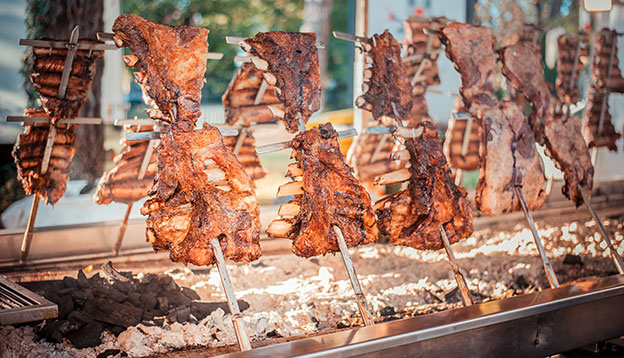
6. Chontacuro Worms (Ecuadorian Amazon)
Alrighty, it’s about time we delved into the more bizarre side of South American food. In this case, we head deep into the heart of the Ecuadorian Amazon, where big, fat, juicy chontacuro worms are grilled on skewers and served alongside fried plantain chips. Packed full of protein goodness, the chonta worm is a common staple for many indigenous tribes living in the Amazon and is harvested from the equally popular chonta (palm heart) tree.
You’ll no doubt be offered quite a few unique dishes when visiting the Amazon, depending on which area of the rainforest you wish to visit. The Chonta worm is something we tried when we visited the Yasuni National Park in the Ecuadorian Amazon.
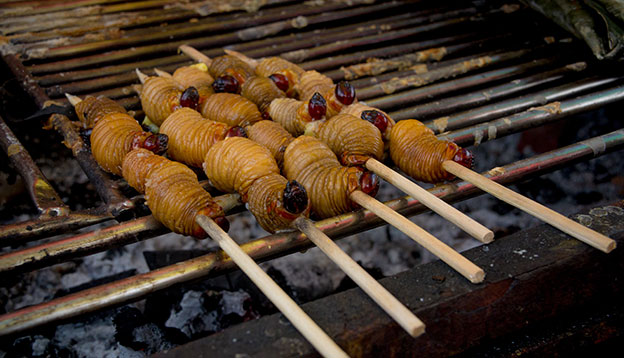
7. Pan de Yuca (Colombia & Ecuador)
Ecuadorian cuisine is immensely delicious and can vary quite a bit depending on where you go. Although you will find plenty of delicious ceviche on the coast and hearty meat stews in the mountains, we particularly love their cheese-filled cassava bread. Pan de Yuca is a Moorish cheesy bread that’s traditionally made in southern Colombia and the northern Ecuadorian coast. Strangely enough, it never really travelled further down so this is still the best area in South America to try it. Cheese bread and hot chocolate is a staple breakfast in Bogota and yucca, in general, one of the main ingredients of Amazonian cuisine.
Learn more about Ecuadorian cuisine before you visit
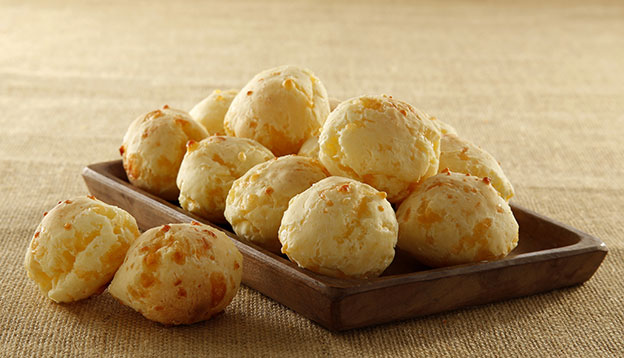
8. Cuy (Peru)
Chargrilled guinea pig may not be everyone’s cup of tea but there are very few dishes in South America that are this distinctive and iconic. Guinea pig is traditionally prepared in the Andes and best savoured either in Cusco or Arequipa, the latter served with a side-dish of delectable stuffed spicy peppers (rocoto relleno) a regional specialty not found elsewhere in the country.
Cuy is very popular among tourists nowadays (mostly for photographic purposes) and given you don’t really get a full meal out of the little guys (turns out guinea pigs are 99% fur) you may just want to order one for the table and several other dishes to actually feast upon.
Don’t mind the presentation.
Cuy is one of 7 Bizarre Foods to Try in South America
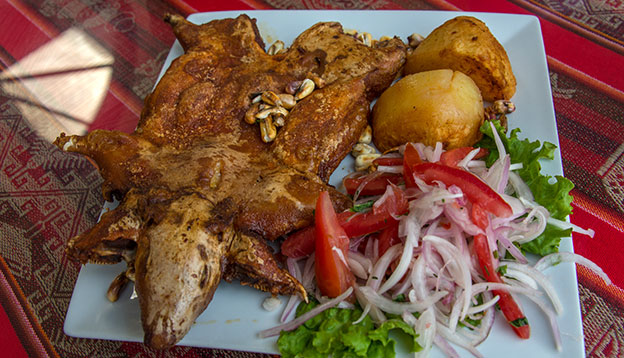
9. Pisco Sour (Peru & Chile)
You know you’re going to run into culinary ‘issues’ when you find something – in this case, a cocktail – that’s claimed to be invented in two different South American countries and the argument actually taken to court. Pisco is a delicious brandy that’s produced in both Peru and Chile and, in the ‘sour’, it is mixed with fluffy egg-whites (sounds weird but goes down an absolute treat), tarty lemon juice and sweet syrup and is as addictive as it is deceptively ‘light’. Now, both Peru and Chile, predictably, claim to make the best version of it. Your mission, when travelling South America?
Decide who’s right!
Here are the Top 5 Cocktails to Try in South America
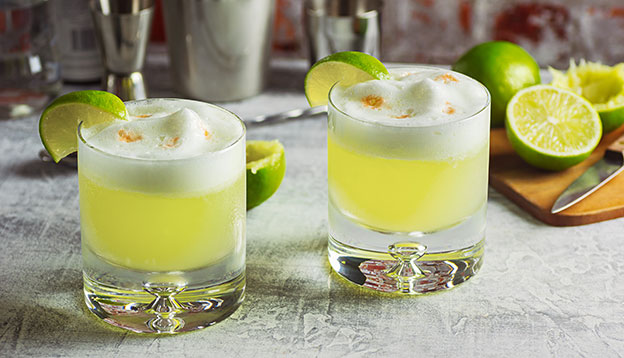
10. Yerba Mate (Argentina, Uruguay, Paraguay)
There are possibly 101 you should never tell an Argentinian: that you don’t like yerba mate no doubt comes right at the top of that list. The national brew, more like a national obsession in Argentina, Paraguay and Uruguay, is said to be ‘as potent as coffee, as healthy as tea and as happiness-inducing as chocolate’ and you’ll certainly be taking plenty of risks if you dare tell the locals otherwise.
Whether or not you can stomach the bitter brewed grass is almost beside the point: drinking mate with locals, in mate-drinking nations, is more of a cultural and dare we say spiritual experience than almost anything else. Friendships are formed over shared mate, trust is given and received. Being offered a sip is an honour, offering one is a sign of deep appreciation.
The history of the yerba mate is fascinating, the herb grown and traded by the indigenous Guarani people, and revered for its medicinal purposes, long before Europeans ever set foot in South America. Today, you’ll see locals carrying thermoses and mate gourd cups everywhere they go, including in the middle of bustling Buenos Aires.
Traditional mate gourd cup and straw (bombilla) make for exceptional souvenirs when visiting this part of the continent – just one of the best Latin American souvenirs that won’t end up in a drawer
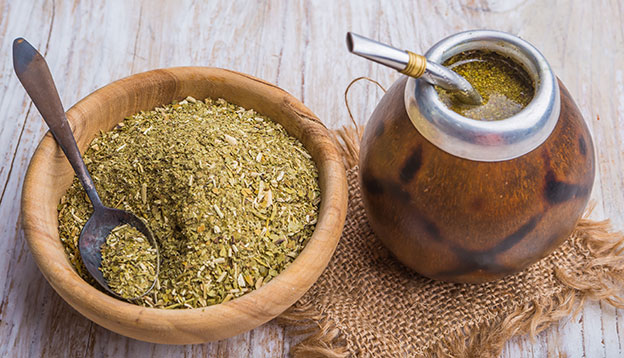
11. Dulce de leche (everywhere)
Many say that dulce de leche is to South America what vegemite is to Australia (ie the most beloved ‘spread’) but, to be honest, we’ve never met a single local in the continent who isn’t totally nuts about their dulce de leche and, in this regard, vegemite doesn’t compete. Some may find dulce de leche, a gloriously thick caramel sauce spread, a little too sweet but we find that when it’s added to cakes and biscuits, it is phenomenal. You may not want to eat it out of the jar like so many South Americans do but if you grab an Argentinian alfajore with dulce de leche, to go with your morning cappuccino, you’ll be a convert in no time.
Here’s all you should know about dulce de leche
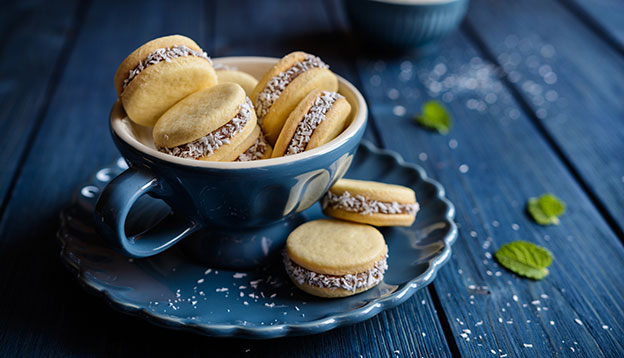
12. Chifa (Peru)
Going to Peru to eat Chinese stir-fry may seem a little strange but we promise we’re not losing our marbles. Peru has a long history of Chinese immigration although, outside of the chifa culinary legacy, it has almost been completely forgotten. A unique fusion of Peruvian and Chinese cuisine, chifa lives in a culinary sphere all its own – it isn’t considered ‘gourmet’ cooking in Peru and is certainly a million miles away from authentic Chinese fare, but it is authentic and unique to the country and you really ought to try it when visiting, especially in Lima, home to the best chifa joints in the country.
Cheap and cheerful as all good ‘Chinese’ food should be, chifa is unbeatable at the end of a long sightseeing day in the capital, when you’re famished but simply cannot be bothered to dress up and head off to a fancy restaurant. Ask your hotel receptionist for the closest chifa hangout and we guarantee you’ll devour it.
Learn more about the Chifa: the Chinese food that conquered Peru
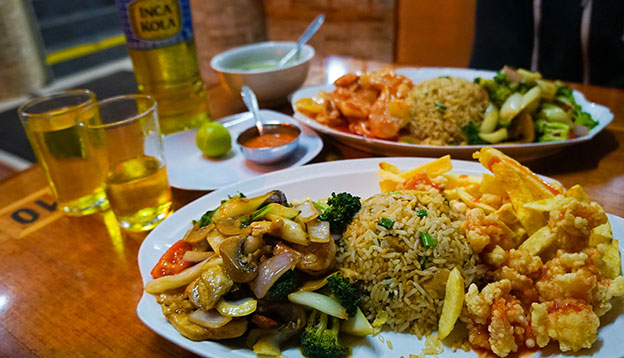
13. Churrasco (Brazil)
There’s only one country that could pull off a BBQ to rival Argentina’s and it just happens to be its neighbour. The Brazilian churrasco is perhaps even more famous worldwide than its Argentinian counterpart; revered for offering ‘the feast to end all feast’, for its oversize- skewer-to-table service and for its equally insane salad bars that are really epic culinary events of their own right. Heading to Brazil and not planning to gorge in a traditional churrascaria?
We think not!
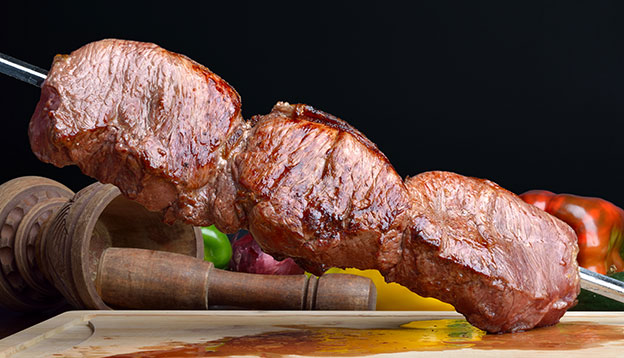
FYI: Brazil is a fabulous foodie destination! One of our favourite things to do is head into a pay-by-the-kilo local buffet restaurant, which you’ll find all over the country. Here, you simply scour the buffet and select what you want to try and pay only for what you take. It’s a great (and inexpensive) way to try a little of everything the Brazilian cuisine offers!
Find out more amazing food you need to try in Brazil
14. Chocolate *yes, all of it* (Bariloche, Argentinian Patagonia)
Latin America boasts four of the top 10 cocoa-growing countries in the world and countless places that produce truly sensational chocolate. Only one, however, is considered the continent’s ‘chocolate capital’ and that’s San Carlos de Bariloche, in the Argentinian part of Patagonia. Now, far be it for us to tell you chocolate feasting isn’t a good enough reason to visit Bariloche yet you should know that this also happens to be one of the most enchanting Patagonian towns of all, framed by the verdant forests of Nahuel Huapi National Park, lapped by its namesake lake and protected by a spine of ridiculously picturesque Andean peaks. A hikers, horseback riders and nature lover’s dream, Bariloche also happens to be bursting with gourmet chocolate shops along what locals have dubbed “the avenue of chocolate dreams’.
No, seriously…
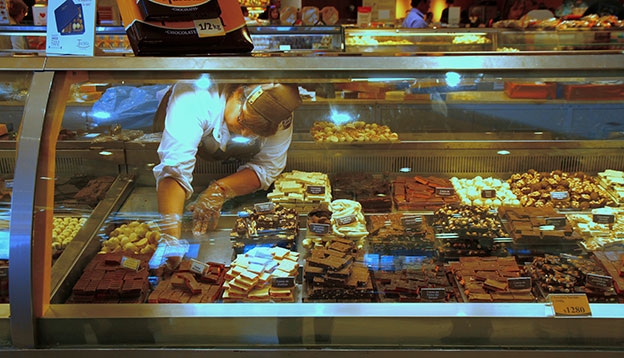
Luckily, there’s an infinite array of outdoor activities to burn off the calorific splurge in Bariloche, so don’t you worry about that.
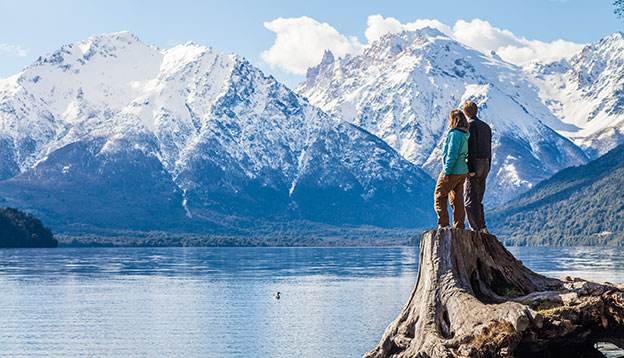
Discover all the amazing Things to Do in Bariloche and you’ll see why you 100% need to visit.
Not sure where to start? Try a South American food tour!
Food tours are becoming immensely popular in South America, with every other traveller not only wanting to eat traditional food but also wanting to learn more about how to replicate it once they get back home. Besides that, food tours are a fabulous way to get that local intro everyone craves, without doing a whole bunch of headache-inducing research and never really knowing where to even start. Much like taking a walking tour on the first day in a new city to get your bearings, food tours allow your taste buds to do the same thing: learn about the local cuisine and know what to start looking out for.
From market-to-table cooking lessons to street-food walking tours, dedicated BBQ crawls (Buenos Aires and Rio, where else?) and even gourmet 5* tours in Lima where you’re guided on a half-day degustation feast to some of the city’s most celebrated restaurants, food tours in South America are varied and rewarding.
Because who wouldn’t want to come home knowing how to make traditional empanadas?
See our guide to wonderful Foodie Tours in South America to get an idea of what’s on offer.
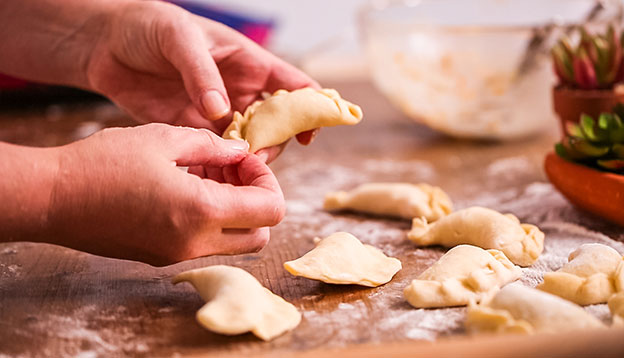
At Chimu Adventures, we’re all about exploring every aspect of local culture when we travel and culinary discoveries are a huge part of every South America tour we take. Moreover, our tailor-made private tours can be designed solely around local gastronomy, which highlight the amazing food and wine produced in this part of the world.
Fancy a taste? Contact us to know more.

Talk to one of our experienced Destination Specialists to turn your Antarctic, Arctic and South American dream into a reality.
Contact us